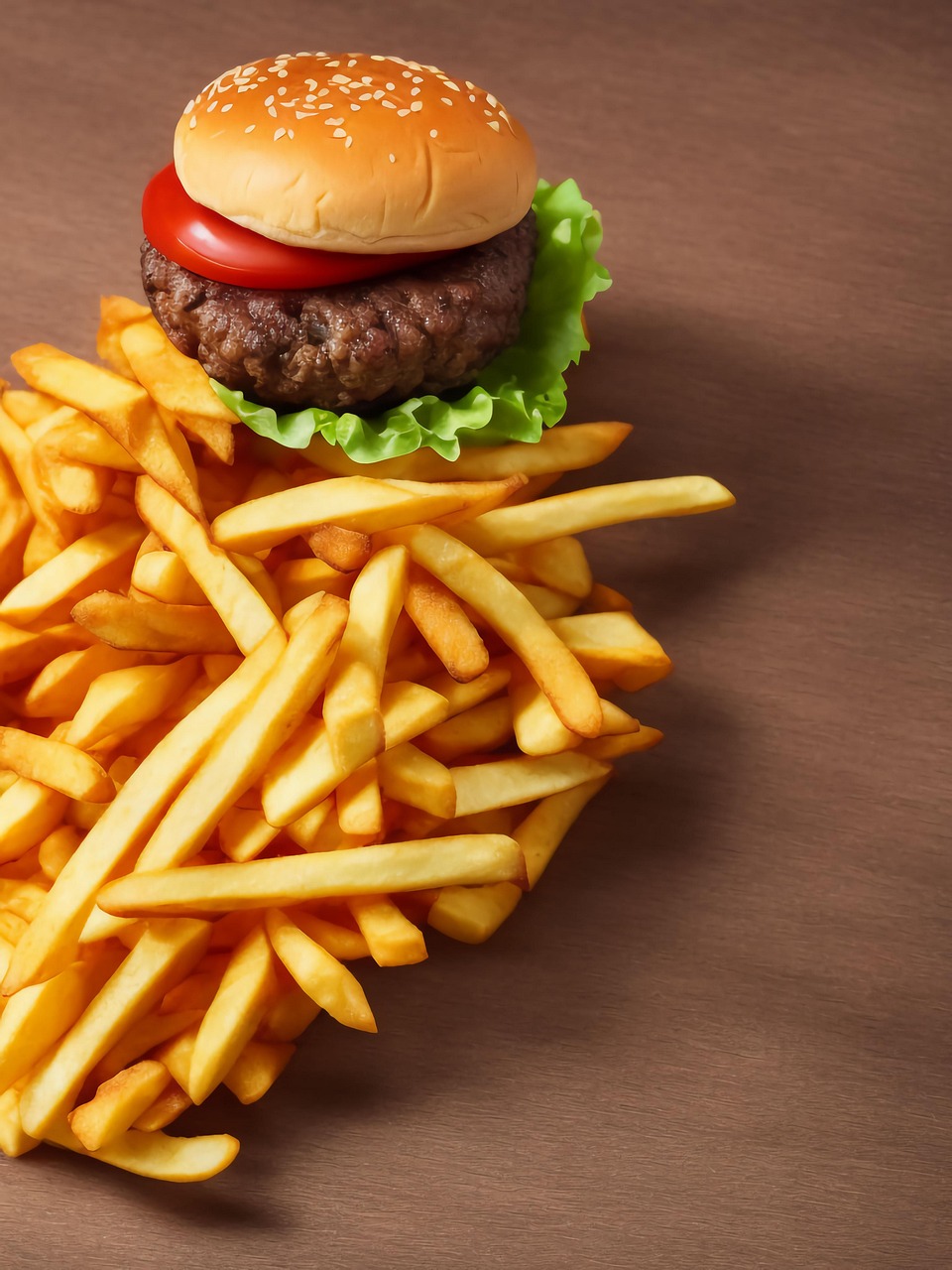The Frequency of Fast-Food Consumption and the Habit of Using Gadgets and Playing Games as Risk Factors for Childhood Obesity

Downloads
Highlights:
No relationship between the frequency of fast-food consumption as a risk factor for obesity in elementary school children. This result was based on interviews with students of Rangkah VII Elementary School during their daily life activities and their tendencies.
No relationship between the habit of playing gadgets and games as a risk factor for obesity in elementary school children. This result was based on interviews with students of Rangkah VII Elementary School during their daily life activities and their tendencies.
Abstract
Introduction: Obesity is defined as the result of excessive fat accumulation caused by an energy imbalance, and it poses significant health risks. The contributing factors to be considered in this instance are the frequent consumption of fast food and reduced physical activity, which result from the increased use of gadgets and games. This study aimed to investigate the correlation between the aforementioned factors and the prevalence of obesity among elementary school children.
Methods: The heights and weights of 112 participants were measured to calculate their body mass index (BMI). The respondents were interviewed directly about their fast-food consumption habits over a one-week period and their daily use of gadgets and games. This study employed bivariate analysis to examine the relationships between variables in a sample, using the Chi-Square test with odds ratio determination, a 95% confidence interval, and a significance level of 0.05, as implemented in the International Business Machines Corporation (IBM) Statistical Package for the Social Sciences (SPSS) version 29.
Results: The chi-square test showed p>0.05, indicating no significant relationship between fast-food consumption or gadget use and obesity in elementary school children.
Conclusion: There was no association between the frequency of fast-food consumption and the habit of playing gadgets and games as a risk factor for obesity in elementary school children.
World Health Organization (WHO). Obesity and Overweight. Geneva, (2025). [Website]
Ministry of Health of the Republic of Indonesia (Kementerian Kesehatan Republik Indonesia). Pandemi COVID-19 Tingkatkan Risiko Obesitas pada Anak. Kemenkes, (2021, accessed 14 June 2022). [Website]
East Java Provincial Health Office (Dinas Kesehatan Propinsi Jawa Timur). Profil Kesehatan Provinsi Jawa Timur 2022. Surabaya, (2023). [Website]
Sriwahyuni, Junaidin J, Noyumala N, Alfiah A, Tangkelayuk V. Pola Makan terhadap Kejadian Obesitas pada Anak. J Asuhan Ibu dan Anak 2021; 6: 91–98. [Journal]
Agustina L, Maas L, Zulfendri Z. Analisis Faktor Perilaku Berisiko terhadap Kejadian Obesitas pada Anak Usia 9-12 Tahun di SD Harapan 1 Medan. J Endur 2019; 4: 371. [ResearchGate]
Ayunani N. Hubungan Pola Makan dan Durasi Bermain Gadget dengan Kegemukan pada Siswa TK Islam Al Azhar 03 Cirebon. Universitas Islam Negeri Walisongo Semarang, (2023). [Website]
Khandpur N, Neri DA, Monteiro C, Mazur A, Frelut ML, Boyland E, et al. Ultra-Processed Food Consumption among the Paediatric Population: An Overview and Call to Action from the European Childhood Obesity Group. Ann Nutr Metab 2020; 76: 109–113. [Journal]
da Silva TPR, Matozinhos FP, Gratão LHA, Rocha LL, Inácio ML, Oliveira CDF, et al. The Coexistence of Obesogenic Behaviors among Brazilian Adolescents and Their Associated Factors. BMC Public Health 2022; 22: 1290. [Journal]
Indarwati PM. Faktor–Faktor yang Berhubungan dengan Obesitas pada Anak Usia 9–11 Tahun di SD Ma’arif Kecamatan Ponorogo. STIKES Bhakti Husada Mulia Madiun, (2019). [Website]
Handayani OWK, Yuniastuti A, Abudu KO, Nugroho E. Gadget Addiction and the Effect of Sleep Habit, Stress, Physical Activity to Obesity. Malaysian J Public Heal Med 2021; 21: 1–8. [Journal]
Nie NH, Bent DH, Hull CH. Statistical Package for the Social Sciences (SPSS), (2022). [Website]
Khalfani MA, Rejeki PS, Sakina S, Fathil NEFM. The Effect of Childhood Obesity on Psychomotor Behavior. Folia Medica Indones 2023; 59: 313–320. [Journal]
Putri SN, Santoso B, Budiono B. Sedentary Lifestyle and Overweight in Relation to the Risk of Polycystic Ovary Syndrome in Senior High School Students in Surabaya. JUXTA J Ilm Mhs Kedokt Univ Airlangga 2022; 13: 57–61. [Journal]
Rizwani AI, Ahyandi SS, Naimatuningsih N, Ridwan EN, Nurvita R, Nujum N, et al. Systematic Review with Meta-Analysis of Obesity as Risk Factor of COVID-19 Related Mortality. J Community Med Public Heal Res 2021; 2: 46–52. [Journal]
Widjaja NA, Prihaningtyas RA. Determinants of Food Choice in Obesity. Indones J Public Heal 2020; 15: 122–132. [Journal]
Rahayu F. Literature Review: Hubungan Kebiasaan Konsumsi Fast Food dan Aktivitas Fisik dengan Kejadian Obesitas pada Anak Sekolah. Politeknik Kesehatan Medan, (2021). [Website]
Thomson JL, Hennessy E, Landry AS, Goodman MH. Patterns of Food Parenting Practices Regarding Junk Food and Sugary Drinks among Parent-Child Dyads. Nutr J 2020; 19: 91. [PubMed]
Legassa O. International Journal of Food and Nutritional Science Ice Cream Nutrition and Its Health Impacts. 1 June 2022. [ResearchGate]
Putri A, Elvandari M, Kurniasari R. Hubungan Kebiasaan Konsumsi Fast Food dengan Status Gizi pada Remaja di Masa Pandemi COVID-19. Darussalam Nutr J 2022; 6: 109. [Journal]
Pebriani L, Frethernety A, Trinovita E. Studi Literatur: Pengaruh Konsumsi Junk Food terhadap Obesitas: Literature Review: Effect of Junk Food Consumption on Obesity. J Surya Med 2022; 8: 270–280. [Journal]
Sani AW. Hubungan Konsumsi Fast Food dan Aktivitas Fisik dengan Kejadian Gizi Lebih pada Usia Sekolah di SD Negeri 1 Lebih. [Website]
Kusumawati E, Fathurrahman T, Tizar ES. Hubungan antara Kebiasaan Makan Fast Food, Durasi Penggunaan Gadget dan Riwayat Keluarga dengan Obesitas pada Anak Usia Sekolah (Studi di SDN 84 Kendari). Tunas Med J Kedokt Kesehat 2020; 6: 87–92. [Journal]
Mardiansyah HT, Irmawati M, Susanti D. Association between the Use of Touchscreen Device and Child Development. JUXTA J Ilm Mhs Kedokt Univ Airlangga 2021; 12: 45–47. [Journal]
Mahmudiono T, Rachmah Q, Indriani D, Nindya TS, Segalita C, Hidayah S, et al. Gadget Use, Pocket Money, and Snacking Habits of Children with and without Overweight/Obesity Problem in Surabaya, Indonesia. Syst Rev Pharm 2020; 11: 1087–1090. [Journal]
Widyantari NMA, Nuryanto IK, Dewi KAP. Hubungan Aktivitas Fisik, Pola Makan, dan Pendapatan Keluarga dengan Kejadian Obesitas pada Anak Sekolah Dasar. J Ris Kesehat Nas 2018; 2: 214–222. [Journal]
Hanifah K. Faktor Kejadian Kegemukan pada Anak. HIGEIA (Journal Public Heal Res Dev; 4. 30 December 2020. [Journal]
Utari DD. Hubungan Kecanduan Game Online dengan Status Gizi Remaja (Siswa Kelas X dan XI) di SMA Swasta RA. Kartini Tebing Tinggi. Universitas Islam Negeri Sumatera Utara Medan, (2022). [Website]
Mulyaningsih AR, Susanto T, Susumaningrum LA. Hubungan Kecanduan Game Online dengan Kegemukan pada Remaja di Wilayah Jember [The Relationships of Addiction to Online Games with Overweight on Adolescents in Jember District]. Penelit Gizi dan Makanan (The J Nutr Food Res 2020; 43: 11–19. [Journal]
Silwanah AS, Amaliah A. Hubungan Aktivitas Sedentari dengan Kejadian Obesitas pada Anak Usia Sekolah Dasar di SD Frater Thamrin Makassar. J Infokes (Info Kesehatan) 2019; 9: 122–127. [Journal]
Copyright (c) 2025 Salsabila Qurrotul Aini Zunnahri, Sulistiawati Sulistiawati, Alpha Fardah Athiyyah, Widati Fatmaningrum, Ronald Pratama Adiwinoto

This work is licensed under a Creative Commons Attribution-ShareAlike 4.0 International License.
1. The journal allows the author to hold the copyright of the article without restrictions.
2. The journal allows the author(s) to retain publishing rights without restrictions
3. The formal legal aspect of journal publication accessibility refers to Creative Commons Atribution-Share Alike 4.0 (CC BY-SA).




























